Resources
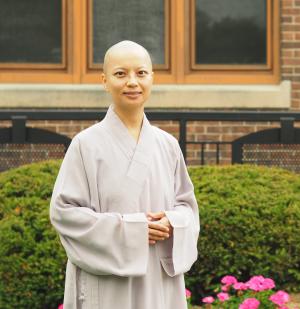
From a broader aspect, school closure during the outbreak of the Coronavirus pandemic created a crisis in the global history of education. But, personally, this crisis brought about opportunities, and the pros outweighed the cons. When classes moved online, the unexpected challenges of educational disruption inspired me—more precisely, forced me—to have a critical reflection on what exactly multimodal communication means in higher education. This unique moment also made me rethink how and why physical interactions play a critical role in the process of learning. These in-depth reflections have reshaped my teaching styles and pedagogical skills, especially in my Zen Buddhism course. The lack of physical interactions during the campus closure created more devastating impacts on my Zen Buddhism class than on my other courses. This intermediate-level class guides students to learn thoughts and practices related to mind cultivation in Buddhist meditation traditions in China, Japan, and the United States. I faced a challenging task: students mainly focused on pursuing “good grades” rather than connecting their learning to the real world. Without classroom engagement, students ended up memorizing knowledge rather than developing insights. This issue is worth seriously considering for instructors. I realized that providing students with opportunities for firsthand experience is more significant than teaching them theories described in textbooks or PowerPoint slides. When we returned to the normative classroom-based environment after the pandemic, I redesigned my course syllabus and included a tea ritual to boost students’ engagement. This change aims to stimulate cognitive abilities and develop a sense of self-awareness. Lesson Plan: Students are divided into five groups. Each group selects a “host” to make tea, and other members become the “guests” who experience mindful tea drinking. I explain the procedure of tea making and each student takes turns practicing the etiquette of a “host” who serves tea. Students are required to observe their physical and mental states during the entire process. After the tea ceremony, each group discusses why tea drinking is a type of mind cultivation and whether the ritual can evoke peace and awareness. The questions that students discuss include: How does tea drinking bring about sensory awareness of the whole person (smell, vision, taste, and feeling cold or warm)? Why and how does tea drinking denote a “healing journey” from a personal aspect? How is tea making as the subject of concentration be unique, when compared with mediation? How is tea drinking in the Zen tradition different from other types of drinking culture (for example, coffee)? During the discussion, I reduce my input to eliminate the “authoritative” voice and remind students that it’s their time to share their self-discovery, which is beyond right or wrong answers. Here is what I have learned from students’ feedback. Students rediscover their sense of awareness: While comparing tea drinking with meditation, most students respond that the concentration produced by meditation is too subtle to detect. But drinking a cup of tea can stimulate multiple sensations such as smell, taste, and physical feeling. Because tea is visible, touchable, and noticeable, students feel it is easier to bring their mind and body together. Students said that they are able to perceive the whole body as a learning tool. Through the integration of physical engagement in learning, students acknowledge that bringing body and mind together is the key to producing insights. Limitation of language: When students discuss and share their feelings, they find out that language has certain limitations and their sensations and states of mind are ineffable and beyond language. Some students struggle to find words to express their feelings. A student said that seeing the world through the lens of “ritual” is very distinct from that of “textbook.” All students agree that this activity diversifies their learning resources and supports other modes of learning such as reading or writing papers. Daily activities create opportunities for spiritual cultivation: This activity enables students to extend the tea-drinking experience to reflect on their other daily routines. Students report that a five-minute tea drinking is a doable and manageable daily opportunity for stress reduction. Students also mention that the quiet moment is a time of mental purification, and they hope to create more occasions to do so. A student suggests that the college should consider providing free tea ceremonies at quiet locations around campus to improve student self-awareness and relaxation during break time, especially the midterm and final exam week. This teaching experience is meaningful and rewarding because I see smiles on students’ faces.
So often scholarship is mired in a narrative of guilt for women who choose the mother. Too often mothering is thought to be a squandering of time for those pursuing tenure or promotion. What does it mean to intellectual communities if motherhood were to be embraced? How is the scholarship of teaching enriched by those who are mothering? What is the detriment of living in a bifurcated identity that silos mothering away from career and vocation? How does motherhood impact the twenty-first century identity politics of scholarship?
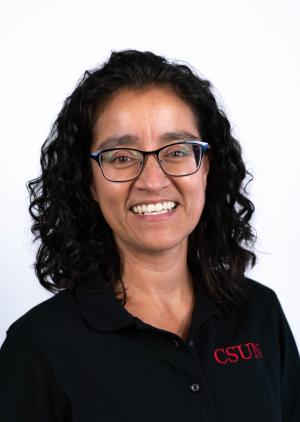
During my first year of teaching, I participated in a Faculty Learning Community that was designed especially for first year faculty. At one point during our bi-weekly gatherings, one of the facilitators made the comment, almost in passing, “We teach humans, not subjects.” My brain shifted gears. His statement helped me place the student in center view instead of the subject and content of my teaching. He was from the education department, so it made sense to me that he was bringing us back to pedagogy. His admonition was that we must first and foremost attend to the humans before us. The moment has stayed with me as an ongoing question—what does it mean to consider and teach the human before me, first, and my course subject, second? There are a couple workshops I have participated in that have helped me fill this in further—one on culturally-responsive teaching that builds on research in neuroscience and cognition, and another on what’s called small teaching. In themselves, these are full and rich frameworks with corresponding research and publications. Still, there are a couple key, practical, contributions they have made to my teaching that have stuck with me and help me keep the human brain in mind—and where my understanding of embodied teaching begins. The first key learning about the brain is that it cannot learn when its amygdala is activated (often referred to as the reptilian brain). The amygdala is activated by stress, anxiety, anger, hunger, fear. It is instinctive, unconscious, and controls our basic body functions, increasing our heart rate and blood flow, for example, when it senses danger. If/when our amygdala is triggered enough, it can keep us in a guarded state that makes it hard to stay open enough to learn. My students’ ability to trust me, then, at least to trust me enough so they can stay relaxed enough to learn becomes my first order of business as I attend to them as whole human beings. Attending to their amygdala is important for them to be ready for the actual task of building on their knowledge and stretching their brains as I invite them to reflect critically upon religion—which is an often-fraught subject that raises people’s defenses. This is where my learning about “small teaching” comes in—specifically the beginning and end of class. The first and last five minutes are key for easing students in and out of the learning space. I am very intentional about how I start and end the class. At the start of the class, especially at the beginning of the semester, I make sure to cover a few bases: (1) give them something to do so that they have a productive way to channel any anxious energy; (2) humanize myself to them so that they can begin to trust me a little; and (3) let them know they are allowed and encouraged to take care of themselves in our classroom so they know I respect them as autonomous beings. I have a variety of ways to communicate these things to them, but I will paint a picture here of a common scene from day one in my typical classroom. As students enter the classroom (whether physical or virtual), a slide is already posted for them to reflect on relating to the topic of the day that includes an image and two questions: What do you notice? What do you wonder? This gives them something to do while also bringing them to the present moment. Then as I call us together to start the class, I welcome them and ask if anyone has a story to share about some recent good news or something new or fun they have done recently—there are usually one or two brave souls who are willing to share about their new pet or job or recent trip. This helps us all get a glimpse of one another as who we are outside of the classroom space. It lightens the mood a little. Finally, right before we start our discussion, I let them know that they are free to move around, stretch, do what they need to do to be comfortable in the class—they can even walk out if needed. I want them to know that I respect their autonomy and support them doing whatever they need to do to be well and to stay present in as much as it is possible. Those are the first five minutes, where I try to help us arrive to the present moment and also try to build their trust so they are willing to hang in there when ideas get challenging. Then the last five minutes are crucial for helping students integrate the day’s learning and give their brain a chance to wrap things up. I never end my class with announcements or reminders—those come earlier—instead I end with a reflection exercise that gives them an opportunity to review, synthesize, or make note of any lingering questions they can bring to the next class. The point is to not send them out with an activated amygdala or hurl instructions at them at the last minute. And having the class end on a calm note is a way of setting the tone of “We got this, we are good for today, and we will continue next time.” As they walk out of class is when they most often reach for the snack box. In my in-person classes, I always bring a box of snacks that has at least three kinds of bars in it (cereal bars, protein bars, granola bars). From day one I let them know that our brain does not learn when it’s hungry and I want them to be able to learn, so they can always count on the box of snacks. In a way, my approach to teaching the human starts with attending to both the brain and the stomach —because it really is all connected anyway… right?
Creating classrooms where learners have agency, trust, and are encouraged to bring their own knowledge to bear upon the conversation is challenging but possible.What does it mean to craft learning activities with more variety and intention than long lists of required readings? What if ah-hah! moments require cognitive dissonance?What if we attempted less volume of material and more depth of the material in our classrooms? Learning to teach better requires risking new practices.
2023 LGBTQ+ Faculty Round table: Queering Pedagogy and Self-care Gathering Date May 24-26, 2023 Kimpton Hotel Monaco Chicago, Chicago, Illinois Team Gina A.S. Robinson, Associate Director Pamela Lightsey, Meadville Lombard Theological School Rodolfo Nolasco, Garrett-Evangelical Theological Seminary Participants Phillis I. Sheppard, Vanderbilt University Bryan N. Massingale, Fordham University Su Yon Pak, Union Theological Seminary Renee K Harrison, Howard University School of Divinity Xochiti Alvizo, California State University - Northridge Luis Menéndez-Antuña, Boston University School of Theology Teresa Smallwood, United Lutharan Seminary - Gettysburg Junehee Yoon, Drew Theological School Craig Ford, St. Norbert College Honorarium and Fellowship Participants will receive an honorarium of $2000 for full participation in the Round Table. In addition, participants are eligible to apply for a $5000 project grant. Read More about Payment of Participants Important Information Foreign National Information Form Policy on Participation Description The aim of this roundtable was to curate a conversation that explored the uniqueness and normativity of LGBTQ+ faculty experiences; consider ways that embodied perspectives might positively and negatively affect pedagogy; addresses the rapidly changing ways identities, current discourse and practices affect teaching; and reflect upon the ways that deep political & theological divides are challenging to queer theory and theology. Additionally, the conversation is designed to help determine how to attend to self-care and determine vocational aspirations in unsafe contexts. On the first evening Anna Deshawn, an Ambie award-winning podcast creator and digital radio host of E3 Radio, facilitated a conversation about the impact they are making in the queer community through their podcast Queer News. Anna Deshawn uses their digital platform to curate conversations at the intersection faith and LGBTQ+ identity. DJ Caryn Robinson created an atmosphere of queer joy by playing music by LGBTQ+ artists and allies. The second day of the gathering was a time to reflect upon the ways LGBTQ+ professors, as embodied professionals enter spaces (some safe, some more challenging) to do the work they are called to do. The leaders grounded the first half of this conversation with two questions: “Who is the LGBTQ+ self that teaches?” and “What pedagogy heirlooms can you share?” These questions invited participants into an exploration of the uniqueness and normativity of LGBTQ+ faculty experiences. Dr. Danie Buhuro facilitated the second half of the session which centered embodiment and self-care. The day ended with an excursion to Lips Chicago to explore teaching in drag. The final session opened with an in depth debrief on what participants learned from the drag performers about embodiment and teaching. Dr. Stephanie Crumpton closed with a ritual to help the participants reclaim rest in their lives as faculty persons. All participants are eligible to receive a $5,000 non-competitive small grant. Description To address the rapidly changing ways identities, current discourse and practices affect teaching To reflect upon the ways that deep political & theological divides are challenging to queer theory and theology To determine how to attend to self-care Description Tenure track, tenured, continuing term, and/or full-time contingency Teaching religion, religious studies, or theology in an accredited college or university in the United States, Puerto Rico, or Canada Identify at LGBTQ+ (Edit)
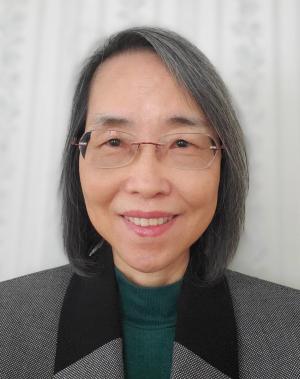
As a toddler, the Grammy-winning musician esperanza spalding heard Yo-Yo Ma play cello on Mister Roger’s Neighborhood and decided she wanted to play music like that. In an interview, she said it was Ma’s “total body activism during the music” that captivated her. A jazz-bassist, vocalist, and composer, esperanza moves with her music, which defies genres, and hopes to create a physical experience of resonance in her audience. As a professor of practice at Harvard, she hosts jam sessions at the studio at Harvard’s ArtLab so that participants can improvise and make music together. In her heart, she wants to be someone in “deep co-learning” with her students. How can our classrooms be spaces of co-learning that welcome creativity, collaboration, and even improvisation? How can we recognize the body as a valuable site of learning, so that the knowledge we gain would not be over our heads, but would speak to and touch our innermost yearning and desires? If this is difficult to do in an in-person classroom, is there any hope for online teaching via Zoom? Last spring, I taught an online course on Spirituality for the Contemporary World for Master students and community learners. I have learned so much about embodied teaching and learning: guided meditation, listening to music and poetry, art appreciation, rituals, Tai Chi, cross-cultural discussion, and much more. I want to reflect on a few memorable moments from the class. I invited Professor Cláudio Carvalhaes to speak on “The Pandemic and the Re-imagination of Rituals” because I knew him to be a creative teacher, preacher, and liturgist. Carvalhaes discussed the relation of ritual to our body and earth. He shared his experiences of leading workshops on liturgies on four continents of the world, which led to the book Liturgies from Below. At a time of crisis, he said, it is important to draw from the experiences of the community to craft liturgies and prayers that respond to the people’s needs. At the end of the presentation, he invited students to offer prayers with the movements of their bodies. He explained what he was going to do and invited students to warm up by standing, shaking loose, moving from side to side, and turning around. He demonstrated how to do these to ease the students. Then he picked up his guitar and sang four stanzas of a song. As he sang the first stanza on happiness and thanksgiving, he invited students to move to embody memories of happiness and joy. Similarly, he sang the second stanza on sadness and the third one on anxiety and invited students to imagine movements to express them. In the final stanza, he closed by asking God to hear our prayers, which were all in our bodies. During the pandemic, feelings of grief, helplessness, and uncertainty are stored in our bodies, as the book The Body Keeps the Score says. Acknowledging these feelings through movements of prayers helped us to connect with these emotions. Doing this together made us feel less alone. Students appreciated the time with Carvalhaes as they were given the freedom to experience the power of ritualizing through their embodied selves in their own ways. I also invited Episcopal priest and artist the Rev. Susan Taylor to lead a class on spirituality and art. Some years ago, I invited her to speak in my class in person and she brought a lot of art supplies with her. She wanted us to try out and create a collective art project at the end and the process was inspiring. This time, I told her, the class was online and I would appreciate it if she could include doing art in the class. She told me to ask students to have their art supplies, such as painting and drawing mediums, brushes, pieces of paper, color, palette knives, etc., on hand. She made a presentation on how arts help individuals and churches during a time of pandemic and strengthen our relationship with God. She shared photos of her art and included a detailed explanation of the process of working through a 7’x 6’ painting entitled “Skyflowers.” Introducing the process of how we would make art together, she offered a lot of encouragement for us to explore and tune out the self-judgmental voice. On Zoom, we could see her painting in her studio, adding shades and layers of colors to her work. We spent some time creating our own art and afterward we shared our experience of making art and what this meant to us. We also discussed how to include art in our own spiritual life and ministries. The brief moment of creating art transformed us from spectators to participants. It was wonderful to see students trying to express themselves in new ways and hear what art evoked in them. Since the class met for an hour and a half in the evening, I decided to teach Tai Chi movements for several minutes in the middle of each class. I began by teaching simple Tai Chi exercises so students could understand the principle of balancing Yin and Yang in the movements. I also posted a video from YouTube so that they could follow the exercises if they wanted to practice more. After we practiced these exercises in several classes, I was able to teach them several Tai Chi movements by breaking down the steps. Even though we practiced only a few minutes in class, a student was motivated to learn further about the practice of Tai Chi. We easily succumb to Zoom fatigue in online classes when teaching is didactic, usually with a PowerPoint presentation, and students become passive onlookers. But there are many ways to expand the possibilities of sensory experiences, even in a Zoom meeting. esperanza spalding invites us to think about teaching as embodied adventures. I have been stretched and learned so much from my co-learners.
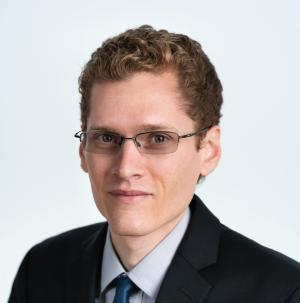
We were halfway through the first day of class when a student started viciously criticizing a TED talk I had just shown. It wasn’t hard to determine where the student’s criticism was coming from. He was furious that I would consider a woman worth listening to. He was spewing misogynistic hate in a room that was 70 percent female. On the first day of class. I responded to the student’s misogynistic rant in my usual way. Trying to stay calm, I seized on something he was saying I could spin into a statement I agreed with, interrupted him with a “yes, and,” and proceeded to explain the value of the points made by the woman in her talk, being sure to emphasize how important and insightful they were. I never heard a misogynistic word out of him again. He never mistreated his female peers (I monitored closely) and by the end of the term was thoughtfully engaging with readings by female authors. It probably helped that he was surrounded—in my class alone—by thirty brilliant young women who were living proof of women’s intellectual capacities. It also helped that I was a white male, in a position of authority, who had not let him get away with saying misogynistic things unchallenged, even if I did use a strategy inspired by nonviolent conflict transformation techniques rather than direct confrontation and criticism. This story illustrates the power of embodiment, even in the form of a video. I doubt assigning a book or article by a woman would have elicited the same visceral reaction. Honestly, it usually takes me strategically getting a little angry in class to get students to stop routinely misgendering authors as “he,” despite my best efforts to ward off that habit, including through strategies like making cover pages for PDF readings that include a short biographical statement on the author. We often think of “embodiment” in teaching as referring to the kind of presence the teacher has in the classroom. Perhaps we also need to find ways to apply embodiment strategies to the authors we assign. Do we lose some of the power of a diverse syllabus when the authors remain just names on a page? In my classes, I try to use media to help highlight the diverse array of voices I hold up as worth listening to. Sometimes I assign a video or podcast or invite a guest speaker in person or on Zoom, but since most of the assigned readings are books, individual chapters, and articles, I also find other ways to help my students see our authors as real people. I often weave short videos or clips of lectures by our authors into my lessons. Lacking those, I’ll include a photo of an author alongside a quotation from their work in a slideshow. These aren’t complicated interventions; however, I fear that without them my students miss the diversity in my syllabi. This is perhaps most true of those students who most need to see it, those so steeped in patriarchal culture that even a “Barbara” or “Maria” becomes a “he.” Such interventions might not be the best idea if the message your reading list sends is that your field is dominated by cishet white men or that they are the only ones worth listening to, reading, or studying. Applying embodiment strategies to authors assumes that we’ve already done the work of diversifying our syllabi with the voices of those whose gender identity, sexual identity, racial identity, ethnic identity, nationality, language background, disability, age, religion, socioeconomic status, etc., both reflect the full diversity of humanity and affect their scholarship. As a white male, I don’t often deal with the kinds of challenges to my authority and expertise other educators experience, at least not from my students (as an adjunct, administrators and my tenure-track colleagues routinely devalue my expertise and experience). This means that my embodiment in the classroom is not particularly fraught. If anything, I have to take care not to be too intimidating lest my presence stifle participation. My identity and positionality also give me a platform and a responsibility to challenge worldviews that dehumanize and devalue those whose backgrounds, identities, and experiences are different from mine. Making the authors in my syllabi a little more real for students is one small way I pursue that goal.
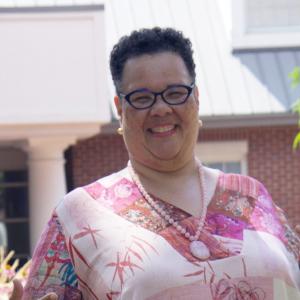
#1 It is not enough to teach against injustice in its myriad forms of racism, sexism, islamophobia, homophobia, patriarchy, classism, ableism, antisemitism, white supremacy, etc. It is not enough to rail against what is wrong and what must be changed, restructured or done away with. We, those entrusted with the responsibility of educating, must teach toward, teach visioning, teach futuring, must teach what we are in favor of, teach what we are for, i.e., the complex notions of community, solidarity, partnerships, coalitions, and collaborations. #2 We cannot settle for, nor be placated by, that which comes with individualized successful escapes, successful assimilation, successful fleeings into the dark nights, successful trickeries, and moments when one or two outsmart, outwit, out fox, or beat back the oppressors. While that is good, that is not enough. These kinds of successes are illusions and meant to deceive. They come at a high, high price. #3 In taking up the struggle, fighting, resisting, we must be about more than …. swimming against the tide, standing against the wind, raising a fist against evil or bullies or the common enemy or fiend. Resisting. Clinching our fists, fighting, while necessary, keeps us from handling tools and opening our hearts. All of these acts-against are, indeed, noble – but not enough. Our liberation must include acts of vulnerability, creativity, imagination, risky business and designing for new kinds of hopes for communal living. #4 We, the collective us – those who are mindful, aware, woke, conscious, faithful, and living as if all lives depend upon all other lives, and all Black lives matter, and that the human family or our earth-house really truly means everyone, all lives matter, and not just a select few who possess all the power, and land and clout, and the vote, not to mention all plants, all animals – the seen and unseen which make-up the tapestry that is our planetary home, all must understand that passive waiting or simply resisting is not enough. It is foolish to think that we can save just a small percentage of the people and the land, and the animals if the rest goes asunder. We are all interconnected. All life affects all other life. The collective us must teach to understand that all of humanity are intertwined and interrelated, and our survival is threatened by the overwhelming greed and selfishness of a few; so, we must decide to teach what we are in favor of and not just what we are against. #5 Friends, Toward what will we teach? What will we be for? What will we be in favor of, say “aye” to? What vision will we cast for our community as a common good? What will we build together? What will we sacrifice, together, for all our children? Who will ally, join, partner, pioneer, and experiment? With whom will we be in solidarity? We know that what we imagine will happen; that’s the nature of imagining. #6 And if we can, and if we do, make this shift – move from being against to working for that which we are in favor of, then: How will we teach our students to think strategically for what we are for? To mobilize for the new marvelous? To know practices of creativity, healing, dream casting, imagination, wonder, planning, no longer to combat against, but to use their energies for what we have agreed will be our hopeful future? How will we teach our students to call up from the deep? What will it mean to teach our students to depend upon their own abundances, knowledges, courages, and hard work? Can they learn to cooperate rather than compete? #7 Teacher, what do you champion? I am hoping it is love, compassion, empathy – for all of life – Lottie, Dottie and Everybody! And that you come to believe that life for some does not mean living at the expense and fodder of others who have been, for generations, weakened, impoverished, downtroddened, and victimized for the survival and thriving of a few others, selected as special, chosen, or entitled by birthright or muscle or raw greed.